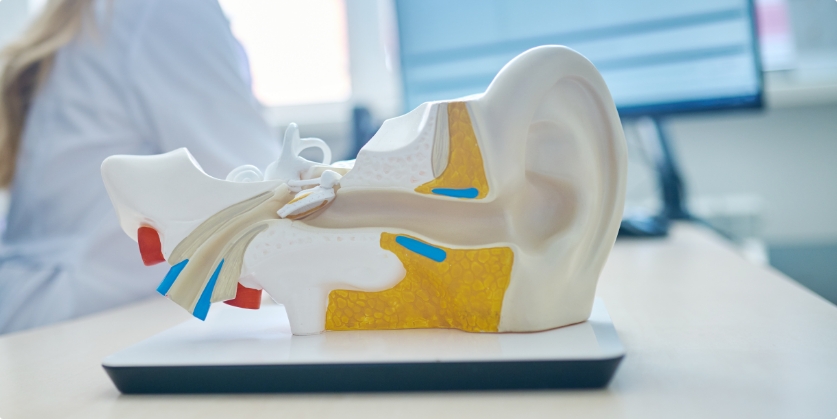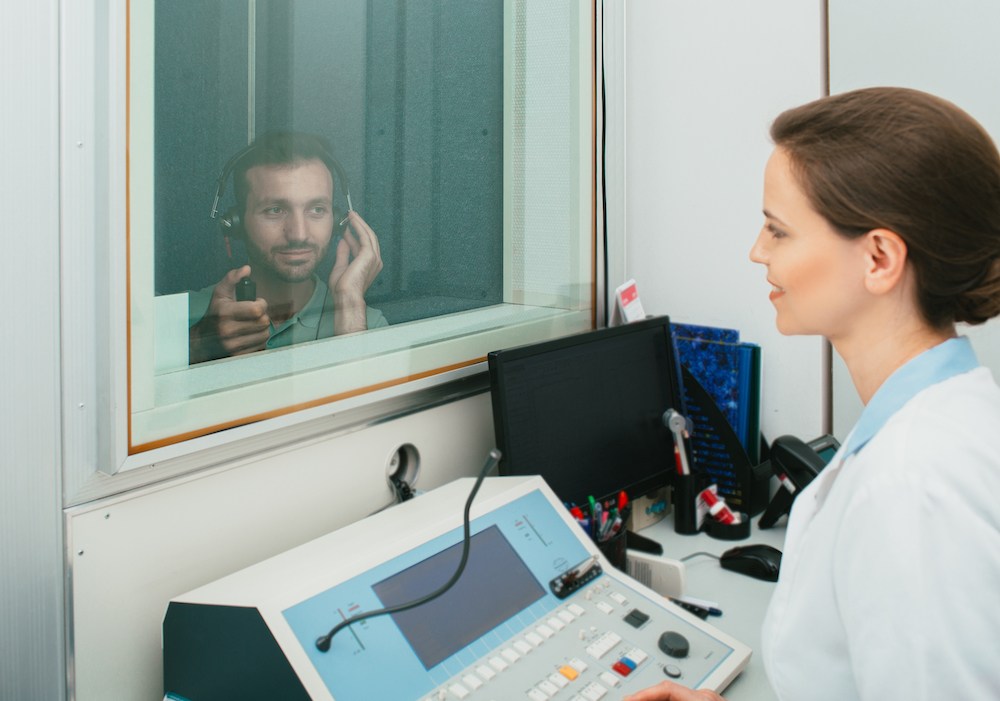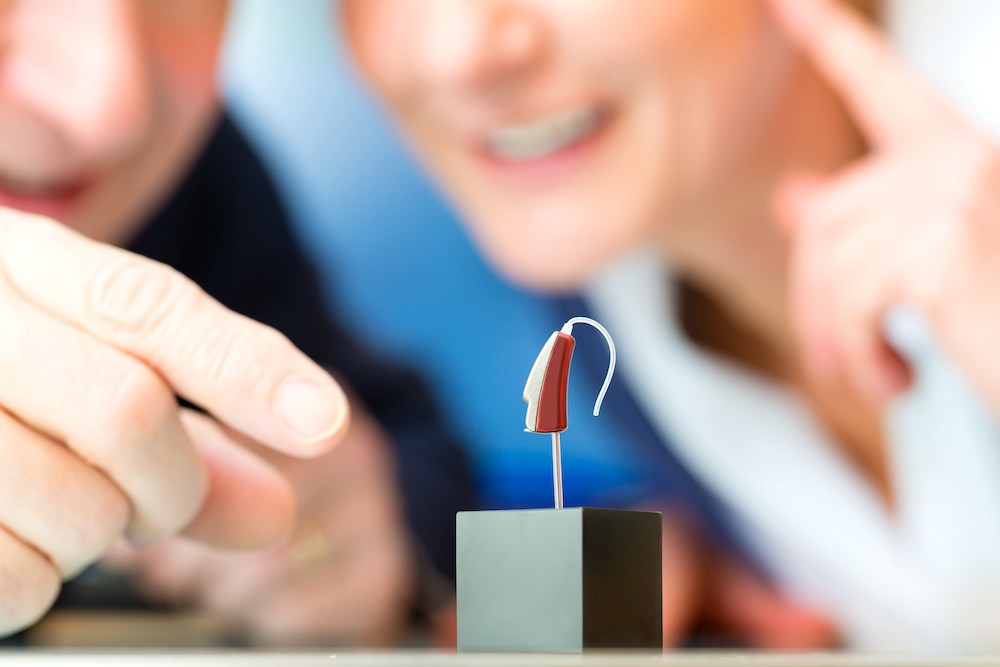The Impact of Hearing Tests on Quality of Life
Your hearing connects you to nearly everything in your daily life, from

By: admin | November 13, 2013
Report of the Task Force on Hearing Impairment in Aged People Background One of the demographic imperatives affecting the United States’ present and future course is the aging of Americans. The number of persons aged 65 years and older is growing more rapidly than the rest of the U.S. population. The expansion of the nation’s aged population has considerable implication for health status, health care utilization, and health care delivery. Hearing impairment is the third most commonly reported chronic problem affecting the aged population. At present, more than 7 million aged persons suffer from some degree of hearing impairment. Given the rapid growth in the population over 75 years of age, it is projected that more than 11 million members of this age group will have significant hearing impairments by the turn of the century. The aging of the population will be accompanied by an increase in the prevalence and severity of hearing loss, due to the direct correlation between age and hearing loss. Presbycusis often is defined as hearing loss associated with the aging process. However, the Committee on Hearing, Bioacoustics and Biomechanics considers presbycusis to be the sum of hearing losses which result from several varieties of physiological degeneration. These include insults due to noise exposure, ototoxic agents, polypharmacy, and medical disorders as well as the effects of physiological aging. Irrespective of the etiology, the interference with communication created by sensorineural hearing impairment has profound negative effect on the lives of aged persons. In addition to its threat to personal safety, hearing impairment has an adverse effect on physical, cognitive, emotional, social, and behavioral function. These manifestations are often viewed by the hearing impaired person as representing a very significant handicap, despite the audiologic appearance of a relatively mild hearing loss. Fortunately, the negative influences of hearing impairment are amenable to intervention. Hence, hearing health care professionals must strive to identify individuals with hearing impairments in order to remediate the permanent impact of hearing loss. Identification of Impairment in the Aged Population The U.S. Preventive Services Task Force has recommended that aged persons be screened for hearing impairment. The goal of any screening program is to reach as large a proportion of the eligible target population as possible. To this end, a number of potential settings are available for screening aged individuals for hearing impairments and handicaps. Potential settings for screening include health fairs, community based programs, primary care physician’s offices, acute care settings, nursing facilities and possibly the home. Each of these settings has advantages and disadvantages, with the limiting factors in any screening setting being ambient noise level, professional resources available to administer the screen, and money available to purchase the requisite equipment. Nevertheless, a screening program should use tools that are appropriate for the particular setting, and should employ professionals who are well trained to perform the screen. Screening conducted in the offices of primary care physicians is particularly attractive because most persons over 65 years old visit their primary care physician on an annual basis and the office may provide a relatively quiet setting for screening. A number of screening tools are available to detect clinically important hearing impairments and handicaps in aged people. An impairment is defined as “any loss or abnormality of psychological, physiological or anatomical structure or function,” whereas a handicap is “a disadvantage for a given individual resulting from an impairment that limits or prevents the fulfillment of a role that is normal for that individual.” Screening tools designed to detect hearing handicaps and impairments fall into two broad categories: hearing handicap scales and audiometric screening. Hearing handicap scales assess the perceived effects of hearing loss on various aspects of daily function. A screening version of one such scale, the Hearing Handicap Inventory for the Elderly (HHIE-S), is a reliable and valid method for identifying handicapping hearing impairment among aged persons. The sensitivity and specificity rates of this tool are approximately 70 to 80% for identifying hearing losses of moderate or greater degree. An audiometric screen is a quick and valid method for detecting hearing impairment among aged individuals. Screening for hearing impairment requires the use of one of two methods: 1) a calibrated audiometer in a quiet environment, or 2) an otoscope with a built-in audiometer (e.g. audioscope). The advantage of using a calibrated audiometer is that it is a valid and reliable technique. The requirement of a quiet environment, however, may not be practical in all settings. The audioscope delivers selected frequencies (500, 1000, 2000, and 4000 Hz) at one of three intensities to the entrance of the ear canal. The audioscope has an overall accuracy for hearing screening of 75-80%. Screening with both a hearing handicap scale and either an audiometer or audioscope is recommended, because the correlation between hearing impairment and handicap is imperfect. Thus, combining the two techniques may increase the overall accuracy of the screening program. Once identified through a screening program as being likely to have a hearing impairment or handicap, an aged person should be referred to an audiologist for thorough audiologic evaluation and appropriate recommendations for aural rehabilitation. Medical clearance should also be obtained to rule our pathological conditions that would contraindicate hearing aid use. Unfortunately, the rate of compliance with the recommendation for further audiometric evaluation among aged persons can be as low as 50% and ranges between 50 and 90%. Moreover, in most circumstances, only 10 to 20% of this population subsequently obtains hearing aids. Barriers to compliance include confusion about the hearing aid delivery system, the cost of evaluation and hearing aids, social stigma, unwanted amplification of background noise, and myths about the efficacy of hearing aids. An integral part of any screening program should be mechanisms to enhance the probability that individuals will comply with referrals for additional evaluation and remediation. Strategies for Intervention The audiological evaluation establishes the need for possible aural rehabilitation and medical evaluation. In most cases, the aged person’s auditory capabilities can be assessed with standard audiometric techniques. Occasionally, the behavioral assessment must be modified to accommodate physical or cognitive limitations of aged individuals. The typical presbycusic hearing loss is sensorineural, sloping, and ranges in degree from mild to moderately-severe. Moreover, pure tone sensitivity tends to deteriorate with age, and males exhibit poorer thresholds than females of comparable age. The hearing loss observed in older people often limits their reception of conversational speech, especially in noisy environments. While the typical presbycusic hearing loss is not amenable to medical intervention, the handicapping effects of the hearing impairment often can be remedied successfully with selected audiologic intervention strategies. Hearing aids are the principal resource for improving communication and reducing handicaps in aged people. Hearing aids amplify speech so that it becomes comfortably audible to the hearing-impaired user, but does not exceed the user’s tolerance level for loud sounds. Significant improvements in hearing aid design have enabled greater flexibility in selecting hearing aids for the typical hearing loss patterns associated with aging. The newest generations of hearing aids includes digitally controlled analog designs. In addition, hearing aids can now be modified to ease manipulation of volume controls, battery compartments, and switches, thereby improving hearing aid use for aged individuals with manual dexterity problems. Recent evidence indicates that hearing aids successfully reduce the social, emotional, and functional handicap often resulting from hearing impairment in aged people. In addition to hearing aids, assistive living devices can be used effectively by aged people to improve communication in specific situations. Assistive listening devices transmit acoustic signals by wire, magnetic induction, infrared light or radio frequency. They are particularly useful when room acoustics are poor. The use of assistive devices is expanding in theaters, public meeting rooms, and houses of worship. They can be adapted for use in personal living areas and common areas of nursing homes where communication may be difficult. Alerting devices, which use lights to signal fire alarms or the telephone or doorbell ringing, can reduce the hazards to safety imposed by the hearing loss. Telephone amplifiers with adjustable volume controls are becoming an integral part of many new telephone designs. The television caption decoder can be used by those with reasonable vision, but whose hearing is limited despite rehabilitation. Assistive listening and alerting devices are effective, and their use should be encouraged in hospitals, nursing facilities, and the home. Hearing aids should be within the greater context of aural rehabilitation. Aural rehabilitation includes any non-medical rehabilitation. Aural rehabilitation includes any non-medical intervention designed to remediate hearing loss and improve communication. It also includes counseling the hearing-impaired person and his or her family about the implications of hearing impairment, as well as conducting a hearing aid orientation and follow-up to ensure proper hearing aid use. Suggestions for maximizing the use of visual cues and residual hearing are provided. Formal speechreading instruction or auditory training may be recommended to enhance the information received through amplification. The aural rehabilitation process should include not only the aged hearing-impaired person, but a family member or significant other as well. For the aged individual to achieve maximum benefit, the family and health care staff must appreciate the impact of the hearing impairment, the operation of the amplification device, the benefits and limitations of the procedures being used, and their own role in improving and promoting communication. Role of the Audiologist The audiologist is the primary hearing health care provider for aged individuals with hearing impairment. An audiologist is a person who, by virtue of academic and clinical training, and appropriate certification and/or licensure, is uniquely qualified to provide a comprehensive array of professional services relating to the prevention, evaluation, and rehabilitation of auditory impairment and its associated communicative disorders. The audiologist may provide these services independently or as part of an interdisciplinary professional team involved in identification, diagnosis, and treatment of individuals who have disorders related to auditory dysfunction. The audiologist serves as the primary expert in the assessment and non-medical diagnosis of auditory impairment in aged people. Assessment includes, but is not limited to, the administration and interpretation of behavioral, electroacoustic, and electrophysiologic measures of the status of peripheral and central auditory systems and measures of hearing handicap. Methods of assessment include hearing-handicap scales, pure-tone audiometry, immittance audiometry, speech audiometry, and auditory evoked potential measurement. Audiologists are uniquely qualified to provide a full range of auditory rehabilitative services to aged individuals. The audiologist is the primary individual responsible for the evaluation and fitting of all types of amplification systems, including hearing aids and assistive listening devices. The audiologist determines whether the aged individual is a suitable candidate for an amplification system, evaluates the benefit that the individual may expect to derive from such systems, and makes an appropriate recommendation. In connection with such recommendations, the audiologist may take ear impressions, fit and dispense the amplification system, and provide counseling regarding its use. The audiologist also provides rehabilitative services and education to individuals with auditory impairment, to family members, and to the public. The audiologist provides information concerning hearing and hearing impairment, the use of prosthetic devices, and strategies for improving speech recognition by exploiting auditory, visual, and tactile speech information. The audiologist also counsels patients regarding the effects of auditory impairment on communicative and psychosocial status. In addition, the audiologist determines the need for additional aural rehabilitation and, if indicated, the nature of the rehabilitation program. In connection with such determinations, the audiologist may conduct individual and/or group rehabilitation programs. The audiologist serves as an advocate for aged individuals by encouraging equal access for those with communicative disorders, by prompting “self-help” consumer groups, and by encouraging third-party reimbursement of audiological services. The audiologist should be an integral member of any multidisciplinary team involved in the evaluation of the social, psychological, physical, and mental status of elderly people. The audiologist also serves aged people by promoting awareness of hearing impairment, available audiological services, and available remediation devices and programs to the hearing-impaired individuals, their spouses and children, and to other caretakers who constitute their support system.

Your hearing connects you to nearly everything in your daily life, from
By: admin | October 20, 2025

Summer puts your hearing aids through different challenges than the rest
By: admin | July 29, 2025

Many people notice gradual changes in their hearing but don’t think
By: admin | June 20, 2025
